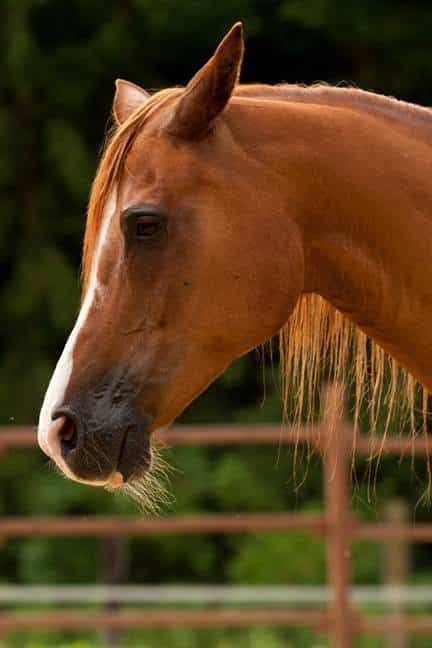Learn How to Photograph Horses

Photographing horses well isn’t simple! Every breed of horses has something special about it, and you should keep that something in mind during photography.
It’s the same with the different riding disciplines: each one has its own special emphasis. But in general when you’re photographing horses you want to get good positions for the ears, neck, shoulder, and legs. Depicting a horse’s eye well is important as well—that makes the photo form one perfect whole.
Always keep in mind the fact that every horse you photograph has to truly look like a horse—not like a donkey, llama, or other animal. You have to emphasize the horse’s best aspects, while suppressing its imperfections. This is work for you, the photographer.
Different Breed, Different Presentation
Certain breeds of horses have some very specific needs for presentation: mini-horses should be photographed to make them look full-sized, American quarter horses should have beautifully sculpted and muscled shoulders and thighs, and so on. You need to adapt the horse’s position relative to the photographer to these needs. You also need to be flexible about the height from which you photograph a horse. Some need to be photographed from above, some from below.
The specific breed you’re presenting will affect the riding equipment you use as well: American horse breeds typically have a massive headstall with silver ironwork, while Arabian breeds have a very thin presentational headstall and Achal-Teke horses have this plus a “collar” around their necks.

Depicting a horse in photos well is definitely not simple. You need to know the horse and learn to read its behavior. That will make you able to see the right time to press the trigger.
The Ears Tell Where the Attention’s Going
In photographs a horse’s ears should be perked up—aimed forward. If a horse is focused on things that are distracting him from behind or from the sides, he’ll turn his ears towards wherever the distraction is currently located. Photograph that, and you’ll get something that looks more like a donkey than a horse.
Meanwhile, ears turned backwards are acceptable in the situation where a horse is playing with another horse in the paddock and expressing its disagreement through its posture. This phase in the turning of a horse’s ears is also acceptable in certain riding disciplines.
When photographing horses from the side, or from slightly below, take care to ensure that both of the horse’s ears are visible. If only one ear is visible, the horse will look more like a unicorn than a horse.
For example in this photograph you can see how the horse’s ears are pointed backwards. You can read from this photo that something is going on behind the horse. And because of that, the horse doesn’t look too good in this picture.

Meanwhile in this picture the horse’s ears are pointed in the right direction:

Sharp, Lively Eyes at the Center of Attention
The eyes should always be sharp in a horse photo—or a photo of any other animal, for that matter, including the human animal. The eyes are the centerpoint of a whole photo, and photographers should strongly pay attention to them when composing.
Also you should keep in mind that eyes should never feel dead, i.e. devoid of a glimmer or shape. So take time to determine the effect of your light source on your horse’s eyes, to make sure they look “alive” and full of lovely detail.
In this photo, the horse’s eye is black, giving it a very dark and unattractive feeling.

Meanwhile, in this photo, the horse’s eye looks right, since it has that critical glimmer. Thanks to this, the eye has a clearly defined shape.

A Round Neck for Nobility
If you want to depict a horse as a noble creature, there’s an easy way to do it. Choose the moment when its neck is nice and round—that is, when it’s looking forwards and downwards. Meanwhile, when a horse’s neck is straight or is turned the other way, it doesn’t look noble at all.

The Shoulders Emphasize Massiveness
The same applies for the shoulders. When your goal is to depict a horse as powerful, you need to wait for a moment when the horse is stepping forward with its more distant front foot. (If you don’t want to wait, you can get an assistant to make this happen, by leading the horse.) This optically opens up the horse’s shoulders, making them stand out more.
In this illustration, the shoulders are very visible, as the horse is placing its left front foot forwards. Here the shoulder looks thin and unimpressive.

In this photograph the horse is stepping correctly, i.e. with its right foot forward. Thanks to this, the shoulder is radiating a powerful, sculpted, muscular feeling.

Watch out for the Wrong Moments
Certain moments are completely inappropriate for photos: any moment where the horse has a bridle-bit in its mouth, where a rider is actively using the reins, where the horse’s mouth is open, or where the horse’s tongue is sticking out. No rider will ever want to hang a moment like this up on the wall.